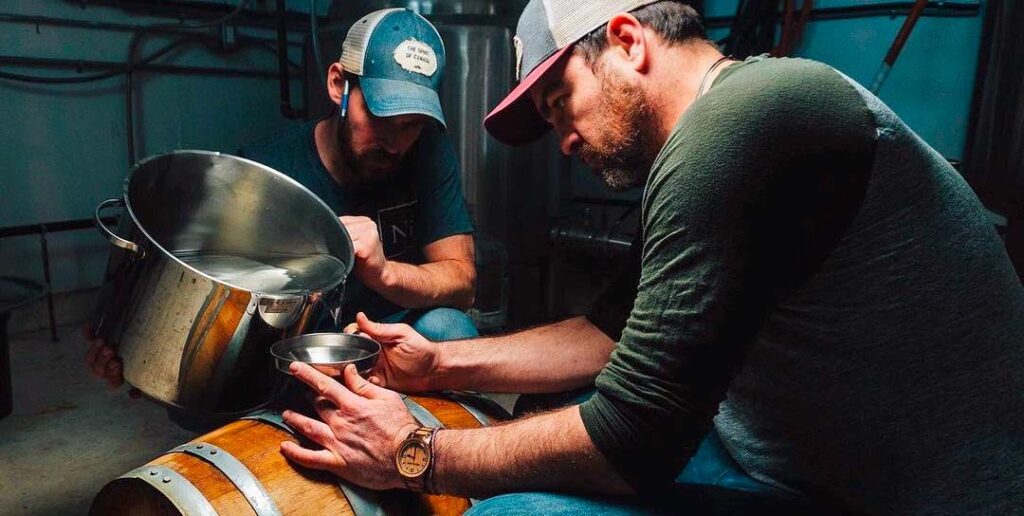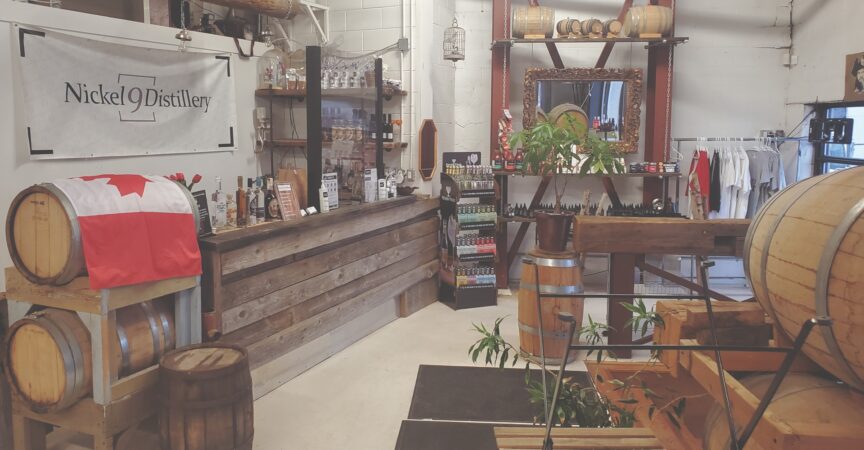Ontario’s Distilling Renaissance
In Ontario, the legendary Hiram Walker distillery in Walkerville is still Canada’s largest distiller and makers of Canadian Club Whisky, which has long served as our national whisky ambassador around the world. Canada’s rich history of large-scale distilling also includes classic brands like Crown Royal, still distilled in Gimli, Manitoba, and, famously, Seagram’s, once the pride of Montreal, Quebec.
While large Canadian distillers continue to earn loyal fans at home and abroad, Ontario’s distilling industry is growing fast and adding new breadth and texture to the Canadian spirits portfolio. New vodkas, gins and whiskies are emerging at a breathtaking pace, propelled forward by craft.
What defines a distillery as “craft” isn’t just the size of the operation. The distinction lies in the independence of the distillery, its production methodology, and its faith in ingredient transparency.
As the province’s craft story and brands are still young, origin stories, taste of place, and the people we’d finished with a whisky or gin barrel, we’d offer it to a brewery. Later, we’d offer the brewery’s beer that came from that barrel at our tasting bar.” These relationships have blossomed over time, ultimately evolving into limited-edition collaborations like Odd Society’s Storm Black Plague Stout Rye Whisky crafted with Storm Brewing and P49 Old Boy Single Malt Whisky with Parallel 49. The fruits of new collaborations with local partners are slowly aging to perfection in their barrels, waiting to add to the Odd Society product portfolio and narrative. “Neighbours and communities and businesses need to support each other,” Karp emphasizes. “We’ve all learned, I think, that we can’t survive on our own.” behind the bottle are as important as the tasting experience in earning new customers. “It’s about our story, where we came from, why we’re doing it, and where our product came from – it’s a massive part of the brand, says Chris Jacks, President of the Ontario Craft Distillers Association. “It’s what people really attach themselves to. People find something not only in the product, but the story to identify with and become part of.”

Jacks is also owner and operator of Nickel 9 Distillery, located in the heart of Toronto’s Junction neighbourhood. Originally a bartender and restaurant consultant, Jacks got into distilling as a personal hobby. Nickel 9’s portfolio includes high-quality spirits crafted from local ingredients and botanicals. Now, as leader of the Ontario craft movement, he is optimistic about the opportunity for growth and feels Ontario craft distilleries are poised to connect with consumers in powerful ways, driven in part by bar staff and restaurants due to their ability to connect with new consumers and introduce them to new local spirits. “Over the last few years, we’ve really grown as an industry in Ontario. We’ve reached our adolescence and that success comes out of our story and relationship with our consumers and business partners.”
In the 12 years since Still Waters opened the first micro-distillery in Concord, Ontario in 2009, roughly 30 distilleries have opened their doors, with creative local offerings from gins, vodkas and whiskies to moonshine, brandy, and amplifiers like bitters. They’ve come a long way from the red tape and confusion faced by early craft pioneers to direct-to-consumer sales. Even with the changes to Ontario’s Liquor Licence Act in January of this year (which allowed restaurants to deliver premixed cocktails to their customers and spirits to be sold at Ontario farmers’ markets), restaurants previously represented about a third of craft distillery sales, and bar staff are of crucial importance to the sector as tastemakers with a shared interest and passion for introducing and promoting new spirits.
Craft distillers and restaurants can help one another thrive in the post-pandemic era, in part by understanding their shared customers and storylines. “We have an opportunity to evolve. You learn about the company, the owner of the distiller, and partners and customers can even come and visit the distillery for a tour. The ability to connect with the producer is such a special thing, and the story is such a big part of the offering and the success.”
While lifestyle has long been a key component of the marketing strategy for many alcohol brands, there is a sense of tribalism that is unique to craft, and to spirits in particular. “There’s always been that element of “Oh, it’s a pretty bottle”,” says Jacks. “There’s no denying that sense of identifying with that brand and that lifestyle is huge for the craft. I feel that the craft offering takes that idea a step deeper into the lifestyle represented by the company and that our partners and customers have a role to play and can benefit from that.”









